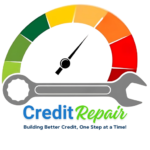Why Is There An Increase Of Elderly People In Our Society?

Research says that the ratio between younger people and elder people is increasing every single day.Research says that the ratio between younger people and elder people is increasing every single day.Research says that the ratio between younger people and elder people is increasing every single day.
How Elderly People Can Create Their Own Community?

No matter how much struggle the elderly community face, they are able to create their own world easily.No matter how much struggle the elderly community face, they are able to create their own world easily.No matter how much struggle the elderly community face, they are able to create their own world easily.No matter how much […]
